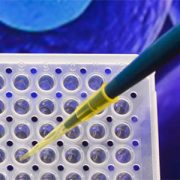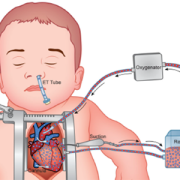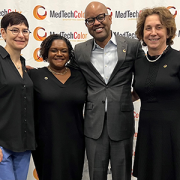Experimental model study links phthalates and cardiovascular health

“Because phthalate chemicals are known to migrate out of plastic products, our study highlights the importance of adopting safer materials, chemical additives and/or surface coatings for use in medical devices to reduce the risk of inadvertent exposure,” explains study senior author Nikki Gillum Posnack, Ph.D.
An experimental model exposed to di-2-ethylhexyl-phthalate (DEHP), a chemical that can leach from plastic-based medical devices, experienced altered autonomic regulation, heart rate variability and cardiovascular reactivity, according to a study published online Nov. 6, 2017 by the American Journal of Physiology. The pre-clinical model study is the first to show such an association between phthalate chemicals used in everyday medical devices like IV tubing and cardiovascular health.
“Plastics have revolutionized medical devices, transformed how we treat blood-based diseases and helped to make innovative cardiology procedures possible,” says Nikki Gillum Posnack, Ph.D., study senior author and assistant professor at the Children’s National Heart Institute within the Sheikh Zayed Institute for Pediatric Surgical Innovation (SZI) at Children’s National Health System. “Because phthalate chemicals are known to migrate out of plastic products, our study highlights the importance of adopting safer materials, chemical additives and/or surface coatings for use in medical devices to reduce the risk of inadvertent exposure.”
According to the Food and Drug Administration, patients who are undergoing IV therapy, blood transfusion, cardiopulmonary bypass or extracorporeal membrane oxygenation or who receive nutrition through feeding support tubes have the potential to be exposed to DEHP.
Patients undergoing extensive interventions to save their lives may be exposed to multiple plastic-based devices that supply oxygen and nutrition or that pump newly oxygenated blood to oxygen-starved organs.
“These interventions keep very fragile kids alive. What’s most important is getting patients the care they need when they need it,” Posnack says. “In the biomaterials field, our ultimate goal is to reduce inadvertent risks to patients that can result from contact with plastic products by identifying replacement materials or safer coatings to lower overall risk.”
In order to assess the safety of phthalate chemicals used in such medical devices, the Children’s-led research team implanted adult experimental models with radiofrequency transmitters that monitored their heart rate variability, blood pressure and autonomic regulation. Then, they exposed the experimental models to DEHP, a softener used in making the plastic polymer, polyvinyl chloride, flexible.
DEHP-treated pre-clinical models had decreased heart rate variability with lower-than-normal variation in the intervals between heart beats. The experimental models also showed an exaggerated mean arterial pressure response to ganglionic blockade. And in response to a stressor, the experimental models in the treatment group displayed enhanced cardiovascular reactivity as well as prolonged blood pressure recovery, according to the study team.
“The autonomic nervous system is a part of the nervous system that automatically regulates such essential functions as blood pressure and breathing rate without any conscious effort by the individual,” Posnack adds. “Because alterations in the autonomic balance provide an early warning sign of trouble – before symptoms of hypertension or atherosclerosis manifest – our findings underscore the importance of additional studies to explore the potential impact of phthalate chemicals on organ function.”
Billie Lou Short, M.D., chief of Children’s Division of Neonatology, called the paper an “important study” that builds on a foundation laid in the late 199os by Children’s researchers who were the first to show that plasticizers migrated from tubing in the extracorporeal membrane oxygenation (ECMO) circuit. Children’s researchers also led a study published in 2004 that evaluated the effect of plasticizers on the human reproductive system. A small number of adolescents who had undergone ECMO as newborns did not experience the complications that had been seen in in experimental models, Dr. Short says.
Posnack’s study co-authors include Rafael Jaimes III, Ph.D., SZI staff scientist; Meredith Sherman, SZI research technician; and Adam Swiercz, Narine Muselimyan and Paul J. Marvar, all of The George Washington University.










